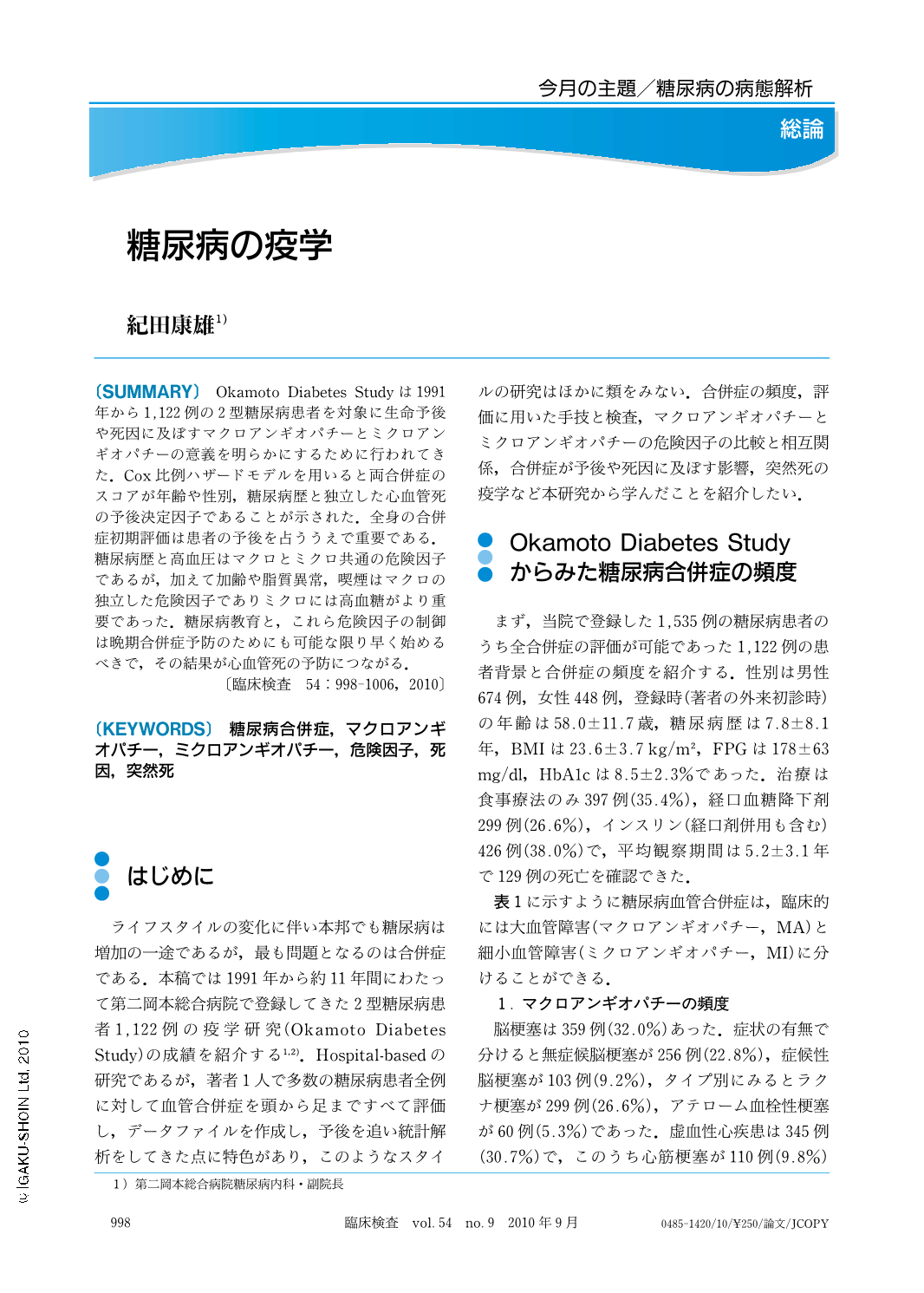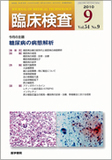Japanese
English
- 有料閲覧
- Abstract 文献概要
- 1ページ目 Look Inside
- 参考文献 Reference
Okamoto Diabetes Studyは1991年から1,122例の2型糖尿病患者を対象に生命予後や死因に及ぼすマクロアンギオパチーとミクロアンギオパチーの意義を明らかにするために行われてきた.Cox比例ハザードモデルを用いると両合併症のスコアが年齢や性別,糖尿病歴と独立した心血管死の予後決定因子であることが示された.全身の合併症初期評価は患者の予後を占ううえで重要である.糖尿病歴と高血圧はマクロとミクロ共通の危険因子であるが,加えて加齢や脂質異常,喫煙はマクロの独立した危険因子でありミクロには高血糖がより重要であった.糖尿病教育と,これら危険因子の制御は晩期合併症予防のためにも可能な限り早く始めるべきで,その結果が心血管死の予防につながる.
The Okamoto Diabetes Study has been conducted to elucidate the role of macro- and microvascular complications on the life prognosis and cause of death in 1122 subjects with type-2 diabetes since 1991. Using the Cox proportional hazard model, adjusted for age, sex and duration of diabetes, the score of both complications was an independent determinant of life prognosis, especially cardiovascular death. Initial evaluation of systemic complications might be an important predictor for a patient's prognosis. Both duration of diabetes and hypertension were common risk factors for macro- and microangiopathy. In addition, aging, dyslipidemia and smoking were independent risk factors for macroangiopathy, and hyperglycemia for microangiopathy. Diabetes education and regulation of these risk factors started as soon as possible to prevent end-stage diabetic complications results in reduction of cardiovascular mortality.

Copyright © 2010, Igaku-Shoin Ltd. All rights reserved.


